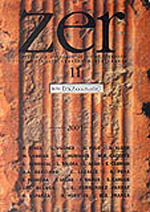Las retransmisiones deportivas como género periodístico espectacular y dramático
##plugins.themes.bootstrap3.article.main##
##plugins.themes.bootstrap3.article.sidebar##
Abstract
This research is concerned with the influence of technical and technological innovations upon the perception of visual spectacularity of TV sports broadcasting. The author first examines journalistic processes, production routines and those factors intervening in the transmission of TV sporting events. The audio-visual event's producer, the technical and technological innovations play a decisive role and the success of a transmission depends on them, for it is agreed that through them spectacularity, viewership and the viewer's satisfaction gain their growth. Whether the assumptions above are certain is best seen through a close study of those agents intervening in the reception of TV sports broadcasting: perception procedures and spectacularity contact between medium and audience. Therefore, the perception of visual spectacularity can be assessed if there is a control of what we label 'internal factors' (those internal issues concerning the sporting event and favouring telegenia of sports journalism), 'external factors' (the role of technologies) and 'personal factors' (competence and sympathy). The study is carried out through a survey of 325 people who viewed 50 different fragments of basketball transmissions (considered the most telegenic sport), broadcast by TVE between 1979 and 1997. The conclusions are that, with regard to the perception visual spectacularity, issues such as sympathy (preference for either of the two teams in competition) and competence (degree of familiarity with sports legistation, with the competition itself, with the leading figures, being a regular viewer of this kind of broadcasts or not, etc) are eventually more decisive than the use of technological innovations.
How to Cite
##plugins.themes.bootstrap3.article.details##
(c) UPV/EHU Press

